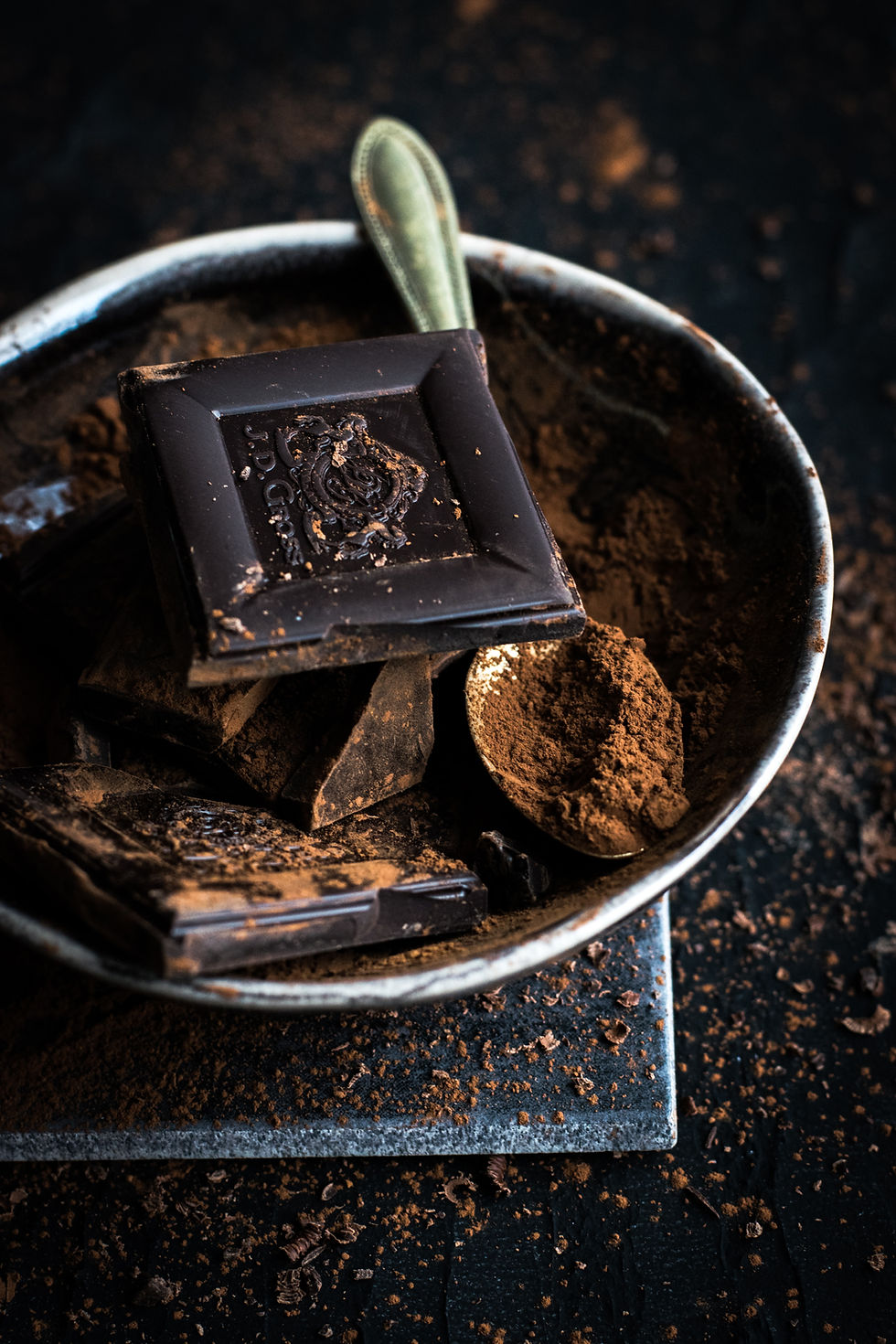Eat to Support Your Period
- Madison Steele

- Mar 25, 2021
- 4 min read

How nutrition helps the body and mind to cope successfully with the different phases of the Menstrual Cycle.
The menstrual cycle is dictated by a complex play of hormones over the period of a month. These are estrogen, progesterone, FSH, LH, and testosterone. These hormones rise and fall and interact during the month as a woman's reproductive system plays out its monthly magic, preparing the body for the miracle of birth. Whether this is the desired outcome of not.
This is the routine for half the human race above the age of 13 and below the age of 53 for 12 months a year and for approximately 40 years of life
These hormones dictate mood and cravings, energy and emotion and, in consequence, affect a woman's nutritional needs
The following four phases in the woman's cycle require different types of nutrition.
Follicular Phase

During the follicular phase when the body is preparing for ovulation, the hormone levels are low and, consequently, energy levels are low too.
Eat Energy foods during this period.
These include:
Iron-rich food like red meat, eggs, and spinach
Vitamin C in citrus fruits
Lentils, seeds, and nuts
Probiotic foods like kimchi or pickled veggies, for gut health.
Ovulatory Phase
The ovulatory phase is a very short-lived 1 to 3 days but its a very intense hormonal period of the cycle. As the egg prepares its trip through the body, energy rises, the woman experiences a sense of well being and, naturally, hugely increased libido and sexual desire.
During this period, especially if a woman wishes to conceive, good nutrition is vital.
Estrogen suppresses appetite so carbs become less important. Light carbs like quinoa are a good choice
High protein meals will give effective energy.
Antioxidants are important at this time, which makes dark berry smoothies a particularly good choice.
High fibre and detoxifying foods are also important. Asparagus and spinach are great choices.
Nuts and seeds are a good addition to enhance light, energy-rich salads, and smoothies.
Luteal Phase
The luteal phase of the cycle is the one that gives us the most difficulty.
We all know that feeling. It's just before our period begins and we are bloated and spotty with dry flaking skin and a desperate craving for chocolate. So we pop two large bars of chocolate into the trolley along with the tampons. Then we settle down to a pie and chips, because we deserve comfort food, washed down by a glass of wine and two painkillers for the cramps. Progesterone is the culprit here but we should not let it control us.
This is a bad habit to fall into as it exacerbates the symptoms of the menstrual cycle and reduces fertility, increases stress and moodiness, and makes weight gain a likely outcome.
This stage of the menstrual cycle, just before the bleeding actually happens, is the bane of many a woman's life. Symptoms are as common as irritability, bloating, moodiness, and weight gain and as obscure as an inability to dream and strange food cravings.
The following supplements are very helpful for reducing common symptoms of premenstrual syndrome.
Zinc
Evening Primrose oil
Magnesium
Vitamin E oil
Vitamin B 6
Vitamin C
Women who have high levels of estrogen and suffer from poor thyroid function should avoid the following:
Members of the cabbage family
Soya
Peanuts
Red meat
All sufferers of PMT should avoid the following:
High sugar foods including dried fruit and honey
Sugar
Salt
Alcohol
Coffee
Tea
Chocolate
The reason us ladies crave chocolate is that we don't know about an amino acid called DLPA (DL-phenylalanine) Our chocolate cravings come because chocolate contains a natural chemical that converts to DLPA in our bodies. This reduces depression and acts as a powerful painkiller but, in chocolate form, it comes with very high sugar and fat.

These are unwelcome additions that none of us should really really be eating. Take a look at the nutrition labels and look for Cacao and low sugar levels, dark chocolate is usually a safe alternative.
Nutrition, of course, comes in the form of food as well as supplements.
Foods high in vitamin E include:
Eggs
Lettuce
Cold-pressed oils
Dark green veggies
Milk
Peanuts
Parsley
Foods high in Vitamin B6 include;
White meat and fish
Wholegrain cereals and bread
Eggs
Leafy vegetables
Zinc is found in:
Beef
Seafood and fish
Nuts and seeds
Grains
Eggs
Kidney
Milk
Brown rice
Mushrooms
Brewers yeast
Magnesium can be found in:
Many nuts
Avocados
Citrus fruit
White meat and fish
Lentils and soya beans
Molasses
Pork
Potato
Rice
Tomato
Green veggies
During this phase of the cycle, one should eat light meals more often. Fiber-rich food helps to reduce constipation and avoiding sugar will stop mood fluctuations.
Menstrual Phase
The final phase of the menstrual cycle is the menstrual phase. The weeping womb phase of the cycle is when the lining of the uterus sloughs away and the cycle begins again.
The types of nutrition for this phase are:
Foods that replenish iron, water, and minerals are important at this stage. Watermelon, mushrooms, soft fruit are among the top choices.
Antioxidant foods are also important at this stage, as are foods that rebuild collagen and bring healing. Rich meat soups, iodine-rich shellfish, berry smoothies, and dark green veggies should feature prominently.
The stages of the Menstrual Cycle can be well managed by proper nutrition, sufficient rest, and exercise. Your monthly cycle can and should be a celebration of your womanhood. Love your moon ladies :)
Sources:
Psycho -Nutrition William Vayda 2004



Comments